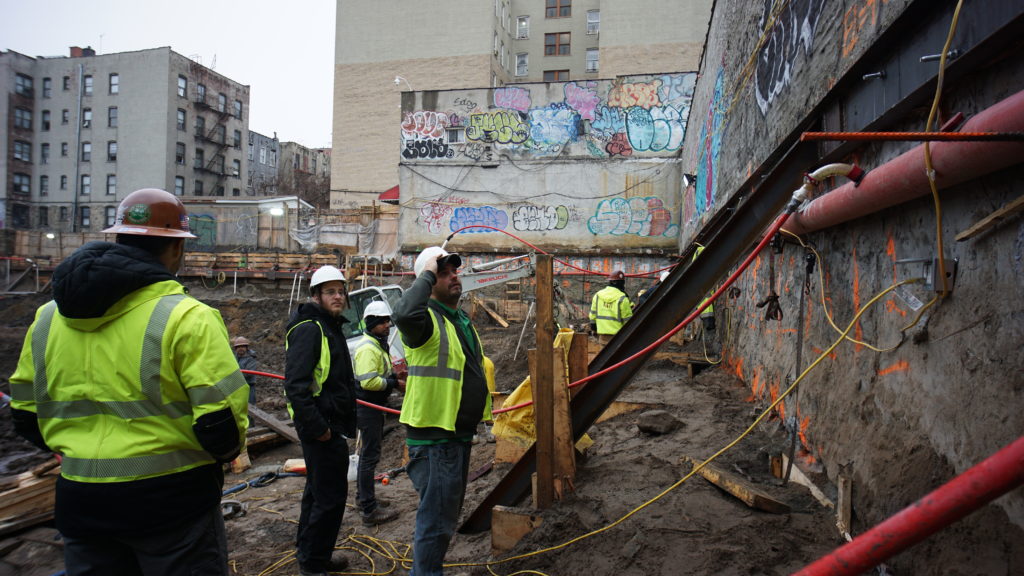Several measures like construction of deep piers, soil replacement, keeping moisture at a constant level, chemical soil stabilization, use of void forms can be adopted to avoid detrimental effects of expansive soil on structures and their foundations.
One or a combination of these preventive methods can be considered while planning construction over expansive soil. The soil investigation report should be available to know the depth of expansive soil and determine the best and economical treatment technique.
The expansive soil exerts heave pressure on the foundations, basements, stem walls, and piers of buildings. As a result, both the substructure and superstructure crack easily and may need expensive repair work.
Initially, the cracks develop at the wall-floor junction and between the wall and the roof slab. Soil expansion also damages the utilities buried in the soil such as sewage lines, water pipes, gas lines, telephone lines, etc.
Damages due to soil expansion are slow and are commonly visible after several years of construction. Expansion of soil pushes up the floor slab and leads to extensive crack development, and it also pushes the footing wall outward which eventually leads to the formation of cracks on the end of the wall.
The magnitude of heave pressure of expansive soil is based on the mineral composition of the soil. The volume of expansive soil can increase up to 20% and impose a force of around 1430 KN/m2.
How to Avoid the Effects of Expansive Soil on Buildings?
1. Drilled Piers
The construction of deep piers is a good option to prevent the detrimental effects of expansive soil on the foundation and the building. The drilled pier, Figure-1, is designed to avoid bearing capacity failure and contain differential settlement of the structure within an acceptable limit. The safety of the drilled piers needs to be examined for uplift pressure.

If uplift pressure is large and drilled pier does not check against it, belled drilled pier should be cast to overcome the pressure. Sometimes, under-reamed piles, Figure-2 and Figure-3, are used to overcome expansive soil problems. The under-reamed pile, Figure-4, is reported to be commonly utilized in India.



2. Replace Expansive Soil
If the thickness of expansive soil is low, the replacement of expansive soil with a compacted, non-permeable soil should solve the problem.
One should be aware that, the soils around the structure may impact the foundation of the building in the long run and may impose detrimental lateral pressure on the soil underneath the foundation.
Therefore, a survey on the properties of surrounding soil can be one of the decisive factors to determine whether expansive soil replacement is a good choice or not.
3. Keep Moisture at a Constant Level
Keeping moisture from reaching the expansive soil would prevent a further swelling of soil. Bentonite mat can be used to keep moisture at a constant level. It is recommended to place bentonite between non-permeable and permeable fabric layers.
As water migrates into the bentonite, it saturates bentonite particles. The saturated particles of bentonite create a solid mat that prevents further water movement into the untreated soil.
4. Stabilize Expansive Soil with Chemicals
One can stabilize expansive soil and prevent heaving when it is mixed with fly ash, lime, or cement. Chemical stabilization is essentially cementing clay particles into place in such a way that they cannot grow in volume.
5. Use Degradable Void Forms Under Grade Beam, Slab, and Piers
Degradable void forms are sacrificial elements designed to prevent foundations from heave pressure of expansive soil. They are constructed from degradable materials such as carton. The degradable form voids can be placed under slabs, grade beams, and around piers to avoid the effect of heave pressure on such elements.
Void forms can withstand operational and fresh concrete pressure, but they lose their integrity and strength, and eventually deteriorate and degrade when they get wet. Ultimately, a space between the foundation and soil is left that can accommodate a maximum soil expansion without affecting the foundation.
The surface of the void form on which concrete is placed should be sealed with a wax coating to prevent the migration of moisture from concrete into the void forms. The void forms need to be kept dry during storage time and from placement until concrete achieves adequate strength to support self-weight.
When degradable void forms are combined with one of the above solutions, it becomes possible to tackle expansive soil pressure to a great extent.


FAQs
How is construction over expansive soil carried out?
Several measures like construction of deep piers, soil replacement, keeping moisture at a constant level, chemical soil stabilization, use of void forms can be used to avoid detrimental effects of expansive soil on structures and their foundations. One or a combination of these preventive methods can be considered while planning a construction work over expansive soil.How is structural damage caused by expansive soil?
The expansive soil exerts heave pressure on the foundations, basements, stem walls, and piers of buildings. As a result, both substructure and superstructure crack easily that may need expensive repair work.
Damages due to soil expansion are slow and are commonly visible after several years of construction. Expansion of soil pushes up the floor slab and leads to extensive crack development, and it also pushes the footing wall outward that leads to the crack formation on the end of the wall.Up to what extent can the volume of expansive soil increase?
The magnitude of heave pressure of expansive soil is based on the mineral composition of the soil. The volume of expansive soil can increase up to 20% and impose a force of around 1430 KN/m2.


